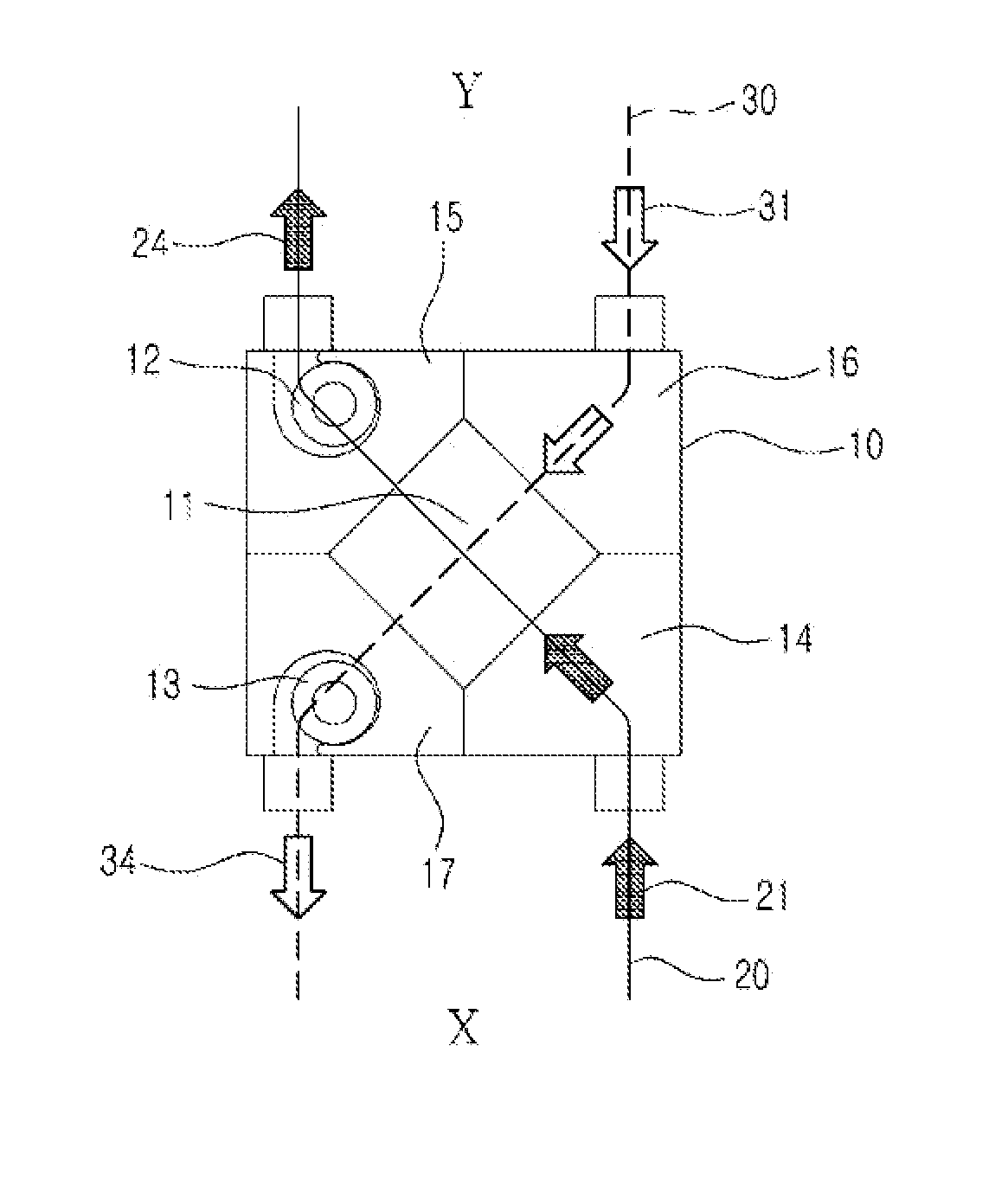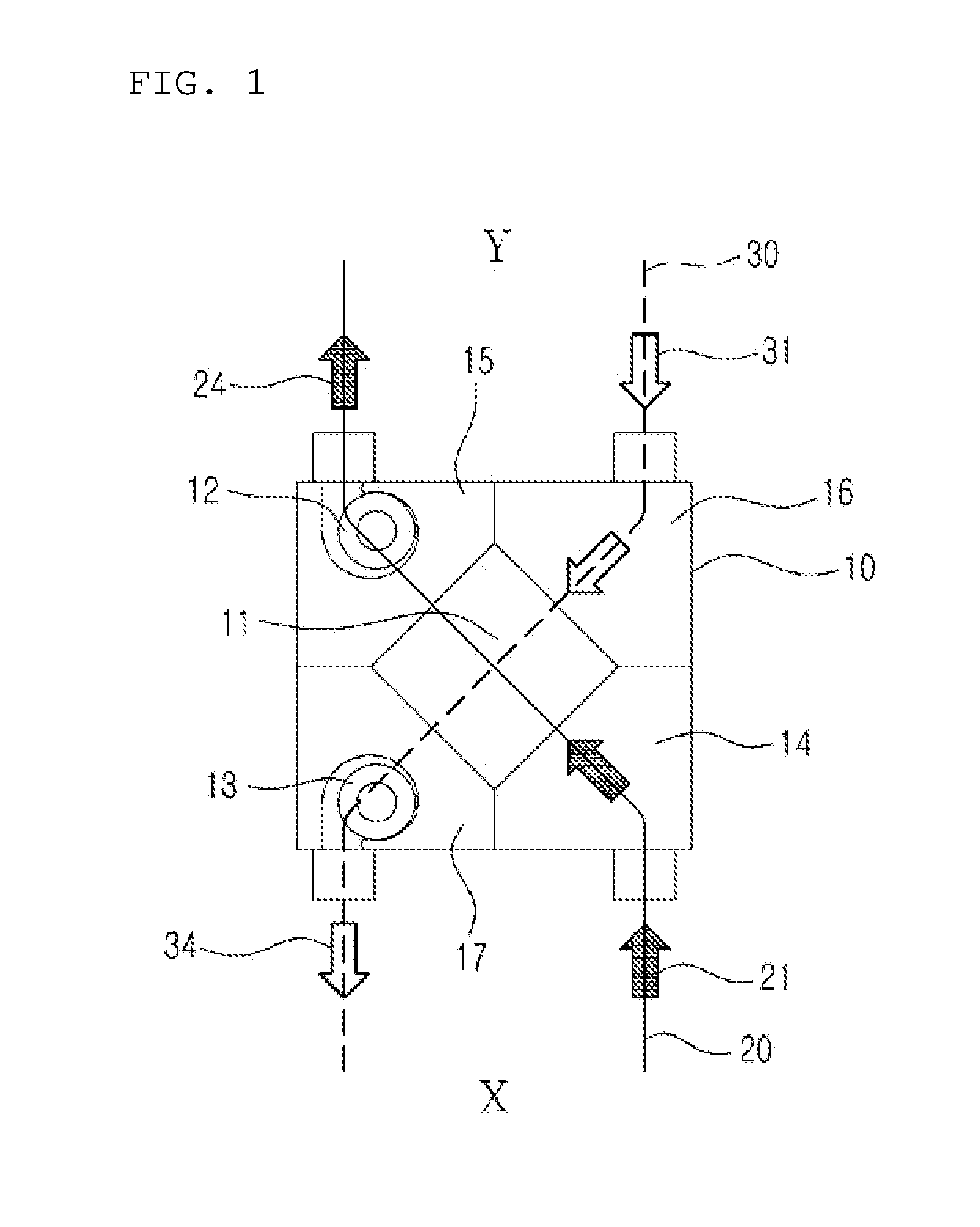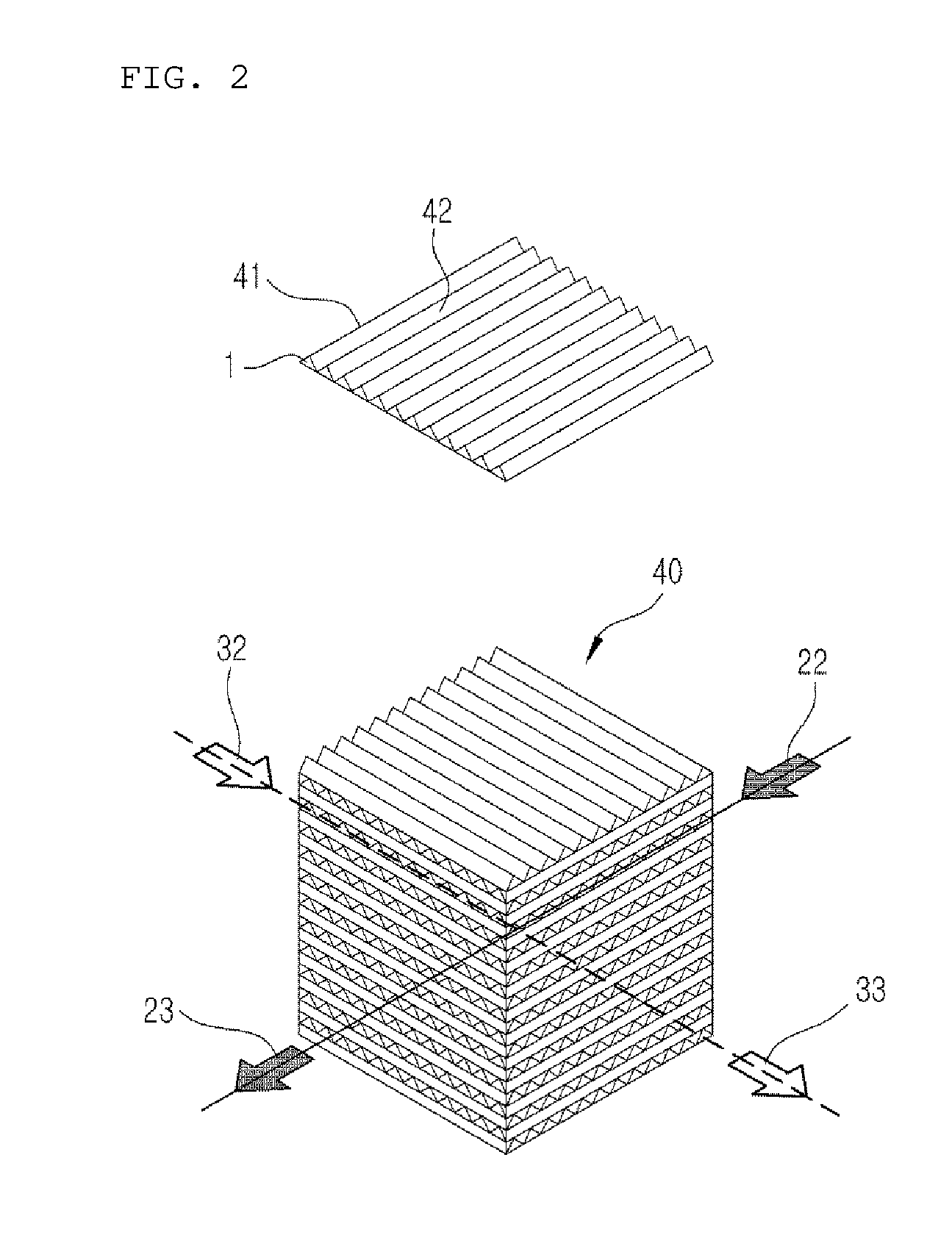Heat exchanger, heat recovery ventilator including the same, and method for defrosting and checking operations thereof
a heat exchanger and heat recovery technology, applied in the field of heat exchangers and heat recovery ventilators, can solve the problems of two-way multi-flow heat exchangers, high manufacturing costs, and the use of expensive metallic materials such as aluminum, and achieves a low manufacturing cost, simple manufacturing process, and reduced the number of factors which cause troubl
- Summary
- Abstract
- Description
- Claims
- Application Information
AI Technical Summary
Benefits of technology
Problems solved by technology
Method used
Image
Examples
third embodiment
[0091]FIG. 15 illustrates a heat recovery ventilator which performs a defrosting operation using the double heat exchanger 90 according to the present invention (refer to FIG. 13). The heat recovery ventilator performs a defrosting operation in the same method as illustrated in FIG. 14.
[0092]The defrosting method of FIGS. 14 and 15 is a negative pressure-type defrosting method which does not supply outdoor air to the interior but discharge outdoor air to the exterior during a defrosting operation. Thus, although the ventilation efficiency is not degraded like the method of FIG. 6, a problem may occur when the defrosting method is used in a place where outdoor air is introduced into the interior through a contaminated path such as an outlet of a kitchen hood.
[0093]FIG. 16 illustrates that a connection path (second connection path) for connecting the exhaust air outlet (that is, exhaust air discharge chamber) to the interior is installed and a flow path selection damper 105 (second fl...
first embodiment
[0102]In the method according to the present invention, three temperature sensors are used to perform a defrosting operation, a normal operation, and a checking operation as illustrated in FIG. 18.
[0103]FIG. 18 illustrates a method in which a return air temperature sensor, an outdoor air temperature sensor, and a supplied air temperature sensor are installed in the return air introduction chamber, the outdoor air introduction chamber, and the supplied air discharge chamber, respectively, and a defrosting operation, a normal operation, and a checking operation are performed on the basis of a result obtained by calculating the temperature exchange efficiency η using temperatures detected through the respective temperature sensors in a normal operation state.
[0104]When the temperature exchange efficiency η becomes equal to or less than reference efficiency ηS, the heat recovery ventilator determines that flow path blockage occurred in the exhaust air stream. When the temperature exchan...
PUM
| Property | Measurement | Unit |
|---|---|---|
| Angle | aaaaa | aaaaa |
Abstract
Description
Claims
Application Information
 Login to View More
Login to View More - R&D
- Intellectual Property
- Life Sciences
- Materials
- Tech Scout
- Unparalleled Data Quality
- Higher Quality Content
- 60% Fewer Hallucinations
Browse by: Latest US Patents, China's latest patents, Technical Efficacy Thesaurus, Application Domain, Technology Topic, Popular Technical Reports.
© 2025 PatSnap. All rights reserved.Legal|Privacy policy|Modern Slavery Act Transparency Statement|Sitemap|About US| Contact US: help@patsnap.com



